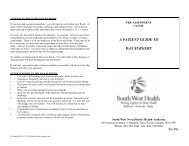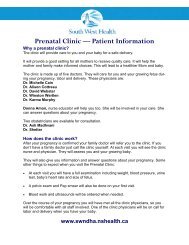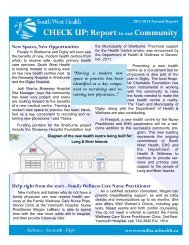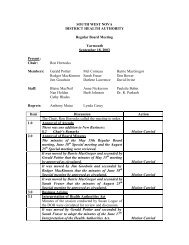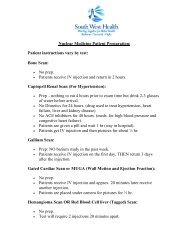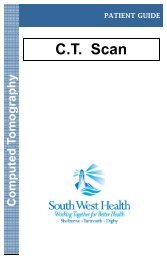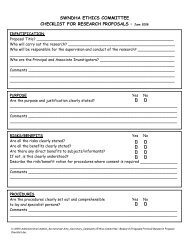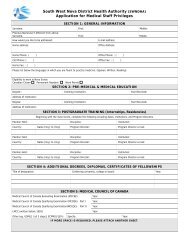Breastfeeding basics Breastfeeding basics - South West Health
Breastfeeding basics Breastfeeding basics - South West Health
Breastfeeding basics Breastfeeding basics - South West Health
You also want an ePaper? Increase the reach of your titles
YUMPU automatically turns print PDFs into web optimized ePapers that Google loves.
62 B REASTFEEDING B ASICS<br />
iAbout breastmilk<br />
Your breastmilk changes to meet the needs of<br />
your growing baby. The first thick yellow milk,<br />
called colostrum, nourishes your newborn and<br />
gives your baby antibodies to fight infection.<br />
After a few days, your milk starts to change.<br />
It becomes mature milk by about 2 weeks.<br />
Your mature milk changes throughout the feed.<br />
The foremilk comes first. It is thin, low in fat,<br />
and high in vitamins. It satisfies your baby’s<br />
thirst. When your child continues to suckle, the<br />
hindmilk is released. It is a high-calorie fatty<br />
white milk which satisfies your baby’s hunger.<br />
Besides responding to your baby’s needs<br />
throughout a feeding, your milk responds<br />
to your environment. Your body produces<br />
antibodies to fight infections that you are<br />
exposed to. You share these with your baby<br />
through your breastmilk.<br />
A BOUT B REASTS AND B REASTFEEDING 63<br />
Your breastmilk is the perfect food for<br />
your baby. And the act of breastfeeding, the<br />
skin-to-skin contact, the cuddling, the “lovegazing”<br />
that breastfeeding encourages, is<br />
important to your baby’s social and emotional<br />
development. Your baby learns that a warm<br />
breast is always available. Your baby learns<br />
to love and trust and play.


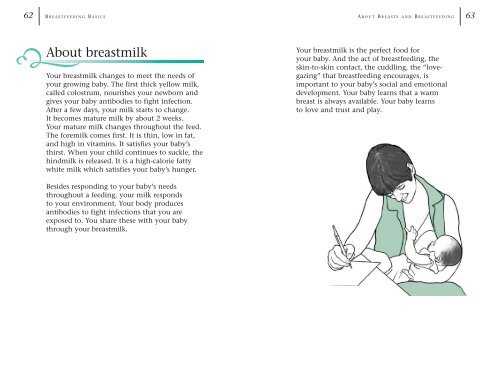
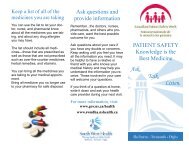


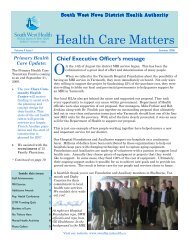
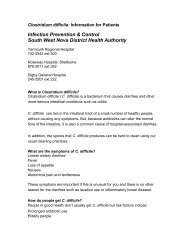
![Pressure Ulcer Prevention SWH[1].pub - South West Health](https://img.yumpu.com/26992883/1/190x115/pressure-ulcer-prevention-swh1pub-south-west-health.jpg?quality=85)
